Aracari – Medium-Sized Colorful Toucan
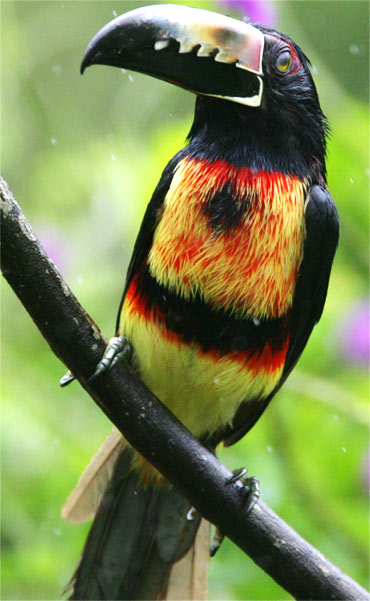
Collared Aracari
Aracaris are a type of bird, they are in fact a medium sized toucan. The name is pronounced with a soft “c” so you would say it “Ara-sah-ree”. Like all toucans they are recognizable by their bright plumage and very large colorful bills. They can be very active hopping from branch to branch and crying out. Their bill usually takes up around a quarter of the bird’s entire body and can be as long as 6 inches (15 cm). There is no discernible difference between males and females like in some other birds.
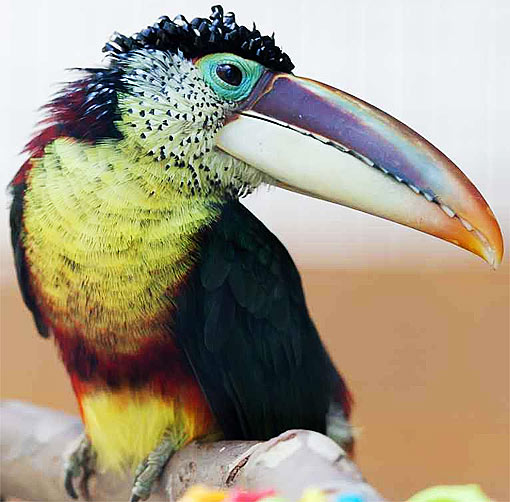
Curl-crested
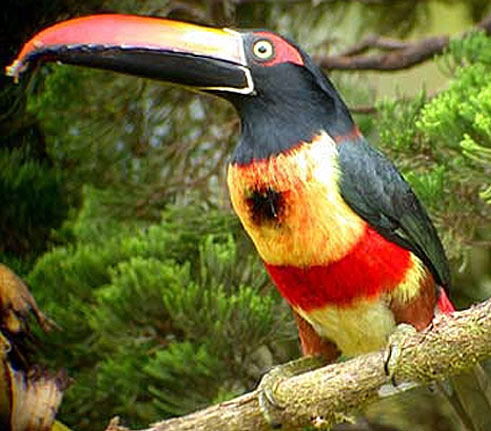
Fiery-billed
The aracaris are an arboreal species which do not migrate which means often they may live in the same tree for their entire lives. They build their nests in tree holes and lay between two and four eggs in each clutch. Breeding usually occurs between February and June. Unlike other toucans, this species are very social and they roost socially throughout all seasons. In fact, up to six adult birds will sleep in the same tree hole with their young with their large tails folded up over their backs. Their flock size doesn’t usually go beyond six birds and their bright plumage provides great camouflage in the rainforest canopy. Despite this, they have a very frequently heard cry which leads bird watchers and zoologists to believe they aren’t really trying to camouflage and it just happens to be a coincidence. Their main habitat is South America and the rainforests although they can be found in other woody and forested areas.
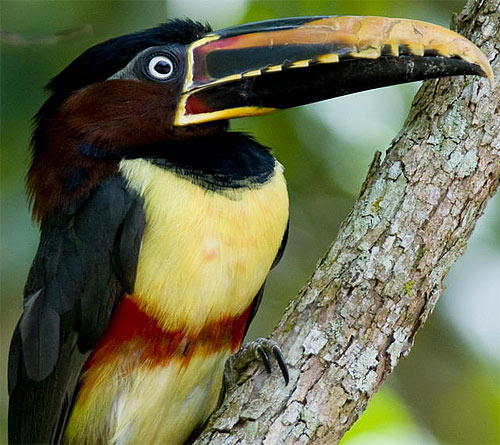
Chestnut-eared
Their huge bills are not great to use as a weapon. They’re made up of a weak honeycombed bone structure and are mainly made up of air between the bone sections. Its size has been said to deter some predators but if it actually came to battle, it would be of no use. The bill is really useful for feeding though. As a feeding tool these birds are able to use their beaks to reach up to branches they cannot land on and retrieve fruits or nuts. Their diet does mainly consist of fruits but if necessary they do also eat small insects, lizards or even young birds from other species.
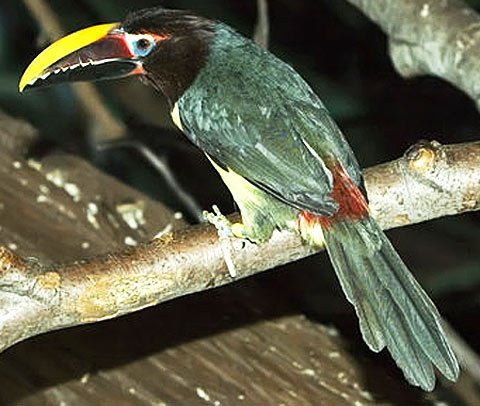
green
